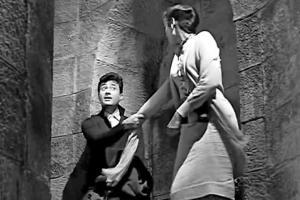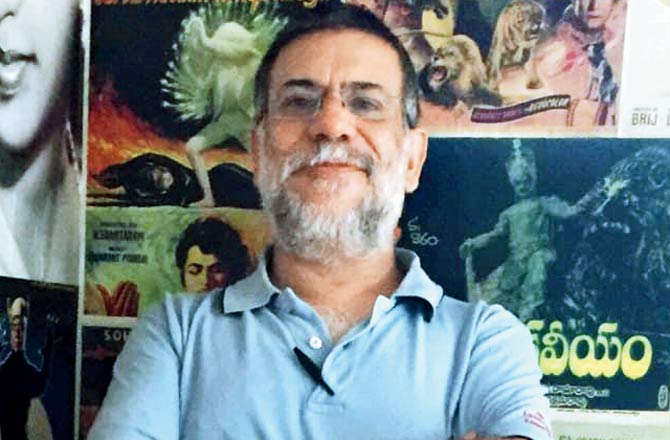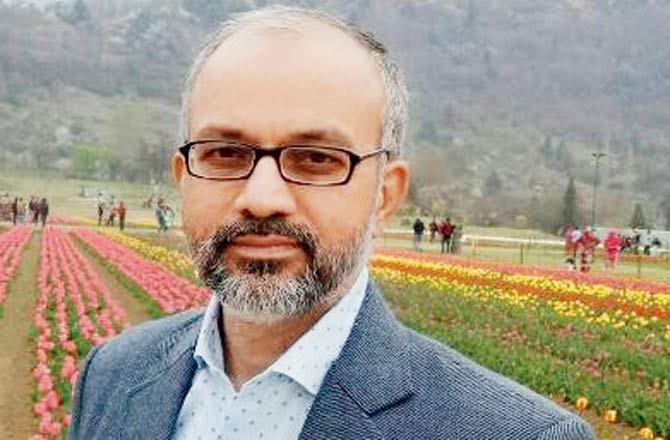A new course in song picturisation appreciation reveals how songs have been used in Indian cinema to take the story forward

A still from the song Dil Ka Bhanwar Kare Pukar
Remember the pelvic thrusting background dancers of the 90s that still get a redo by filmmakers looking for a nostalgia button? Or perhaps, the swing dancers in the black and white films as the leading lady or man, stood in a corner singing their heart out? Later this month, the Film and Television Institute of India will offer a course on song picturisation appreciation — literally, about understanding the nuances of how songs are picturised in Indian cinema and what different eras brought to the screen.
Speaking about the course, the idea of which germinated last year, FTII director, Bhupendra Kainthola and Karan Bali, the course director, say over the years everything about film songs in Indian cinema — music and picturisation has changed. The course is a new chapter in understanding this evolution. "Songs have been an integral part of our films right from our first talkie, Alam Ara (1931). Indians have music in our blood and we see this in our lives too, where we have a song for every situation from when we are born to when we die. Various forms of Indian theatre too, used music and dance as a part of their storytelling and this continued but naturally, when cinema took over from the stage as the primary form of entertainment.
ADVERTISEMENT

Karan Bali
I think the film song evolved to a highly sophisticated art form by the 1950s and '60s, becoming perhaps the most important part of our storytelling on film. The best songs combined the best of writing, music and dance with a strong sense of storytelling through filmic techniques," says Kainthola, adding, "What's more, they gave mainstream Indian cinema a unique identity of its own. These songs were often the biggest reasons for 'repeat value' of a film as well written and composed songs resonated big time with our film audiences. Till recent times, it was unthinkable for an Indian film to not have songs."
The course then will be about the film song, and its use as a critical element of storytelling. Elements will include the evolution of song picturisation techniques over the years (technically and aesthetically), the golden age of film music — the 1950s — through eminent composers, lyricists and choreographers, filmmakers who elevated song picturisation into an art form such as Guru Dutt, Vijay Anand, Mani Ratnam and Sanjay Leela Bhansali, and film songs and their picturisation in contemporary times.

Bhupendra Kainthola
Kainthola takes the example of the song Dil Ka Bhanwar Kare Pukar from the 1963 Dev Anand starrer Tere Ghar Ke Samne and says that here the developing romance is beautifully built up through the sequence where Dev Anand and Nutan climb up the Qutub Minar. "It then finds perfect expression of their love story as he declares his love to her on the journey downwards. And it's not merely having the right situation at the right time in the story. The song should also move the story forward through its different aspects — lyrics, composition, use of choreography, locations and costumes."
Kainthola and Bali take us through the evolution of the Hindi film song picturisation over the decades: From the stagy, static picturisation of the 1930s, the film song came into its own as all its elements peaked in the 1950s. Thereafter, it has seen its ups and downs. Bali picks the example of the 1970s when Hindi films turned action oriented with the advent of the "angry young man". That's when, he says, a decline in film music began, hitting rock bottom in the 1980s, only to slowly turn around in the 1990s.
"At the same time, different cinemas across the country have seen different stages of development. While Hindi cinema saw its nadir in the '80s, music maestro Ilayaraaja did some of his best work in the Tamil and Telugu film world during the same period. And even as aesthetically Hindi cinema dipped downwards, filmmakers down South like Mani Ratnam showed just how beautifully a song could still be filmed.
In fact, Tamil cinema has always been ahead of Hindi films as far as choreography is concerned and even today, they use the song far better than their Hindi counterparts. The traditional film song in Bollywood is struggling a bit to be picturised in newer creative manners that would hold audience interest. Of course, part of this is a higher degree of realism entering Hindi cinema, a change in audience tastes down the years — the sad song, for instance, is all but gone today," he adds.
Catch up on all the latest Mumbai news, crime news, current affairs, and also a complete guide on Mumbai from food to things to do and events across the city here. Also download the new mid-day Android and iOS apps to get latest updates
 Subscribe today by clicking the link and stay updated with the latest news!" Click here!
Subscribe today by clicking the link and stay updated with the latest news!" Click here!







